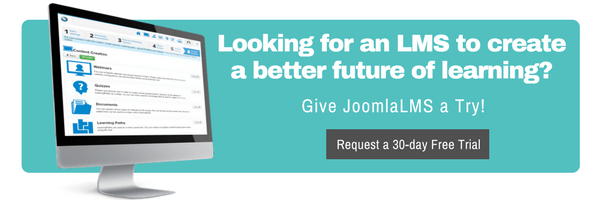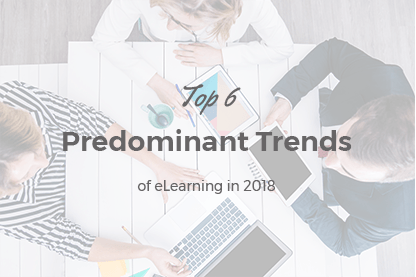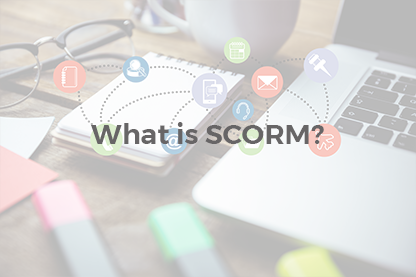Over the years technology has been changing the way we live, communicate, educate and learn. Smartphones, laptops, social networks, unlimited access to the Internet, immediacy of information... Technology has become such a significant part of our everyday lives that we stopped noticing it. But are these changes for the good or bad? Have we become less creative and able to think deeply? How to deal with screen addictions and students’ social anxieties when it comes to face to face interactions?
Those are the questions we have addressed to an international educator, EdTech consultant and frequent conference speaker on educational topics – Matt Harris, Ed. D.
In this interview Matt shares his thoughts on the changes transforming the sphere of education and gives away the secrets of removing the destructions as well as finding the balance between screen time and face-to-face interactions.
Don’t miss an opportunity to get practical pieces of advice from an experienced educator with more than 15 years of experience in the field.
Video Transcript
The examples of how technology has changed the education are very broad. There are quite a few. To the most part, technology has changed the way that we look at the education in terms of space, time, and the potential. With technology you have the opportunity to learn at any point: the students have access to resources, access to a device, and access to materials, they can learn! And technology, with being in their hands, allows them to have access to those things 24 hours a day. A student can learn materials at school, at a class and then do it at home just as well with their access through the technology.
So examples would be...
Technology has allowed teachers to create activities that students do at home, and then things can happen at school that would change the paradigm. That’s called “Flipped learning”.
Flipped learning paradigm has students watching videos of the lectures they would have received at school, and, instead of doing their homework at home, they do this level of learning in class. And by doing it in a class, they can interact more with their peers, they can collaborate more and they can get a direct help and instructions from the teacher. So, the stuff that they normally just be sitting and consuming information can be done outside of class time, while a class can be used for more productive measures.
It is just one example.
There are millions of examples how technology teachers individually to the students, personalizes learning, deepens instructions, broadens instructions.
One thing that technology does not do though, is a promise that any of those changes will be a benefit to the student. This still falls on the shoulders of the teacher. Technology offers the potential to change things for the good, but the teachers have to see the potential in order to do the things that are impactful.
The advantages of using technology for teachers and students are pretty high. There are quite a few of them. The ones I would concentrate on most would be around accessibility and personalization. Those are of 2 largest things that we see with technology for learning where students can have access to materials and instructions at any point of the day, anywhere in the world, they don’t have to be in a particular room or a particular time with a particular person, they can access it anywhere. Beyond that, in terms of personalization, technology allows students and teachers to make learning personalized for an individual student or a set of students and students can have control over that learning.
In terms of disadvantages, there are opportunities for social and emotional growth to be stunted a little bit. There is the opportunity for students to move more into the cyber world and lose their interactions with other students.
There are of course dangers with some of the things that we offer to students in terms of access to broader resources, broader pools of information on the internet, there are activities they can get into that are negative, there is a potential to be distracted in this learning because you have the same device, the same resources available for learning that you would use for more personal items or for leisure activities.
But these are all are navigated by schools that know what they are doing, schools that put into digital citizenship or internet safety curriculum, schools that talk specifically with the students about managing their lives, managing the tasks they have to do for learning.
That is really two questions there, right? How has technology changed the potential role of a teacher and the opportunity role for a student? I think these are the questions you have there.
In technology rich environment, and by that I mean access to devices for the students, digital resources external to the classroom, connections to other people, the teacher is no longer has to be the store of knowledge, the one that knows everything, is delivering information to the students. They can now become a more as a guide that guides students, develops the activities for experiential learning as opposed to knowing all the information.
Instead of teaching from the front delivering content, they are teaching from behind or from a side, working with students to experience the learning that has to be heard. They still are experts in the field, they are experts in what they are trying to teach, but they don’t have to know every detail, they don’t have to deliver on every piece of information and instead can focus on the learning, rather than on the content. That is very powerful because, by making sure that experiences are tailored to the students’ needs, the learning becomes more affective and more effective which is great.
The student also changes because we see a changing world in students’ technology-based schools and classrooms where they are no longer just consumers of knowledge; they are no longer just reciting information for exams, for quizzes or tests. They now get to participate in this balanced approach to learning where they are still learning how to consume and use the information for specific purposes, for exams, for tasks, they still develop that skill because they have to, but they also become creators of knowledge.
Within a technology-based classroom, because there is personalization, because there is creation and consumption, students become owners of their own learning. They learn how they learn, they learn how to manage their tasks, and they learn how to get everything done within their own scope, desires, and interests rather than just following through the pass that was laid out before them by the people that sat in the chairs before them.
I think that it depends on where you are. I think there are pockets of the world where it can be true that there are large numbers of reluctant teachers, but in my spheres where I work, in international schools, almost every teacher that I have worked with has a desire to do this, has a desire to have access to technology to do things that are impactful. Actually, I don’t find that a lot of them are reluctant, what I find is that many of them are worried or concerned because they are uninformed, they feel that they are underskilled or they feel that there is a lot is written on their success.
Many teachers have experience learning on their own, in their own school experiences that don’t align with this technology-rich environment. So how do you teach, how do you do these sorts of activities when you don’t have experience with them as a learner yourself? So, it's incumbent on schools to make sure that teachers learn how to use the technology kind of a stand-alone and also learn how to use the technology for the purposes of teaching and learning.
I also think there is some fear that if they are not successful, it is going to impact their schools, their jobs. But that’s a part of the learning process when it comes to technology that not everything is going to work. Things break down, processes don’t work out perfectly and you do the spiral effect when you keep developing your skills, you keep developing your programs and you get better. So again, it is incumbent on schools to support teachers and their experimentations, growth as individual learners, growth as teachers as they go into this world to get over that fear and worry that they have.
So I don’t know if they are truly reluctant or they just don’t have the experience to see what can possibly be done. Once teachers see that, once they have the control over their own teaching within this technology rich environment they jump on it, they are opposite of reluctant, they are really enthusiastic and they produce some pretty amazing things.
I don’t think that is true at all. I think it makes people think immediately and that is mostly in reference to the access to the information through the social media, through the immediacy of information. We don’t find the lessening of thoughts; we find an immediacy of reaction. And that is really what needs to be addressed. People exercise this ability to think creatively and deeply more before they respond, before they react.
In fact, what I am finding is that because there is so much information and students have to spend so much time drifting through those things, what they find is that you can’t trust every source you see. You have to collaborate, you have to validate, and you have to put things together. What I am finding in the students that I work with is actually quite the opposite. Their ability to think critically has grown because there is so much misinformation available to them. Their ability to think deeply is really there. They might not be exercising it at the level that we want, but it is already there because of the tasks we ask them to participate in using all these technology tools. And creativity, from what I have seen, is going off the charts.
One thing that the internet and technology does is that removes the barriers between people and ideas. Students are now being exposed to the things that we have never seen them exposed to before. And because of that, it is sparking new ideas, it is sparking new ways of thinking, it is sparking these amazing things that are coming out of people and students. They can be seen sometimes as reactive, as a little bit shallower, but if you really look at some of the stuff that is produced, it is creative and like nothing we have seen before at this scale. So, I actually think it is quite the opposite. That is not something that needs to be remedied, it needs to be further nurtured and there have to be greater discussions of how you communicate in a way that is creative and deep, but is beneficial to others and is not just the immediacy of reaction. That's what I think is the problem, people just reacting too much.
I do notice it myself. I find more students are having game addictions, screen addictions; they are spending more time on a device than we would like them to. This is a collective issue, not just an issue for students. I see it with adults; I see it with very young children. I live in Asia and I see families doing this all the time. When I visit other countries I am expecting to see something different, but it is there, it is pervasive. This is an educational problem and a health problem as smoking or as obesity would be. It is something we need to educate people on and not assume that it is going just to fix itself.
One approach that we take at our school is that we have, as we call it, PHC personal help social education for students. And part of this PHC program is that we do something around digital citizenship. And there are a lot of great resources out there on digital citizenship. Digital citizenship will talk to students about remaining safe on the internet, respecting copyright laws, social and physical health aspects of using technology. So we provide them ways of timing themselves, finding ways of removing distractions, focusing on other activities and finding the balance between screen time and not screen time.
One of the things that we suggest for parents is that they need to extend their parenting responsibilities to the computer as much as they do in a real world. And we find that the parents are coming on-board with this quite a bit more, but in the recent past, parents would spend very little time going on Facebook, Snapchat, Minecraft, whatever those tools are and sharing time with the kids. What they normally do is just look over a shoulder, make sure they are not looking at something inappropriate and walking away. If a kid doesn’t feel the parents’ presence within a part of their life, then it is unmonitored time. If a kid can go out on the second life in Minecraft, or Snapchat or whatever it is and say whatever they want without any moral repercussions from their parents or behavior management from other people then that’s a danger, that’s a real problem. So parents have to become involved in this very serious, get to participate.
The other piece at a very functional level that we suggest for everybody is to go the particular place where technology is not available. And very clearly the place where technology shouldn’t be available for most people is in the bedroom because it is a place to sleep. It is a place for rest, and technologies from the interactive elements are very interesting, active and keep you awake and we spend more time on the screen. So having a screen to anybody, adult or child in a bedroom at night is a detriment to quality sleep.
So we suggest again that students find the ways to self-manage, we offer them some suggestions on how to do it and for parents to get involved and we say “no devices in the bedroom”, turn them off. Put them away, you don’t need them.
About the Author:

Matt Harris, Ed.D. and I am international educator with deep passion around Educational Technology (EdTech).
He works as an administrator in international schools and is an international EdTech consultant, speaker, and author. He has been working on projects around sharing of international educational technology ideas and resources, use of data in international schools, and developing a framework for effective EdTech use in international education.
To learn more about Matt, visit him on his web site: mattharrisedd.com or follow him on Twitter @MattHarrisEdD









